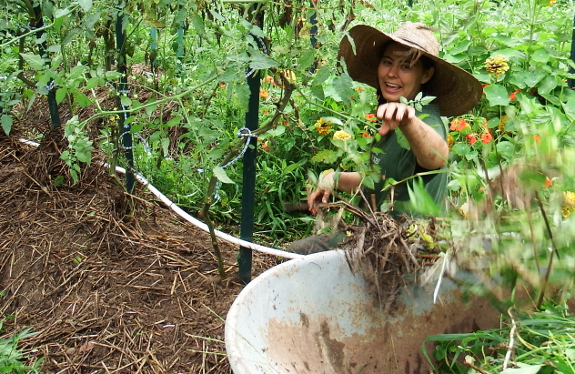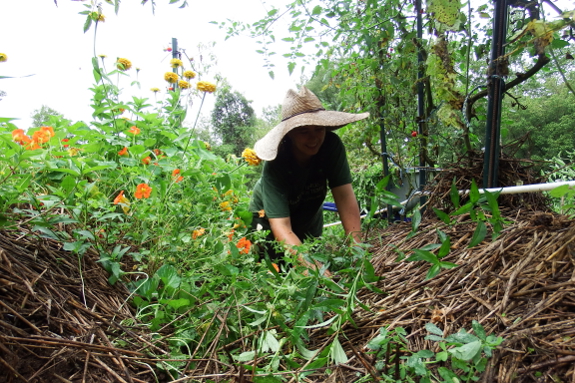
When to plant a garden in zones

From a biological perspective, I prefer a patchwork-quilt garden.
I don't like actual companion planting because I feel like the
companions always compete with each other. But a bed of one vegetable
surrounded by a bed of four other types of vegetables tends to break
pest and disease cycles and also promote pollination (especially if you
slip in a buckwheat or flower bed here and there).

On the other hand, there are issues with the patchwork-quilt approach. Watering can be tricky if you use overhead irrigation, so I already pull my tomatoes out to live in their own dry patch with drip irrigation. Major runners like winter squash and sweet potatoes often fare better if given a compound rather than a single bed since you can let the vines intermingle rather than begging them to stay on their own side of the garden. And I've learned the hard way that it's very difficult to graze goats on an oat cover crop if that grain is next door to overwinterers like garlic and kale that you don't want nibbled.
So I'm setting aside
entire zones of the garden for goat grazing this winter...which means
weeding under the current plants and scattering oat seeds this month.
I've had good luck with this technique in the past amid tall summer
crops like tomatoes and corn, so am pretty confident I can turn the
entire forest and back gardens into goat-forage zones. But there are
only two weeks left to plant if I want the oats to have time to grow
before winter cold sets in. So for the rest of August, oats are a top
priority!
Want more in-depth information? Browse through our books.
Or explore more posts by date or by subject.
About us: Anna Hess and Mark Hamilton spent over a decade living self-sufficiently in the mountains of Virginia before moving north to start over from scratch in the foothills of Ohio. They've experimented with permaculture, no-till gardening, trailersteading, home-based microbusinesses and much more, writing about their adventures in both blogs and books.
Want to be notified when new comments are posted on this page? Click on the RSS button after you add a comment to subscribe to the comment feed, or simply check the box beside "email replies to me" while writing your comment.

I have raised beds that are 3' wide by about 25-30 feet long. Within each "bed" I have different planting areas that average around 3' by 4' (ostensibly to allow the chicken tractor to "sit" over the area so the chicks can dig up any bugs and aerate the soil through their scratch. This idea, of course, doesn't work. ) This year I planted sweet potatoes on a trellis in one section and about two sections over some vining hull-less seed pumpkins. Well, now I've got sweet potato vines having a war with the pumpkin vines and both of them taking over the walkways and trying to grow into the other beds. Not doing that again! Next year the hull-less seed pumpkins go outside the garden in a different area altogether.
) This year I planted sweet potatoes on a trellis in one section and about two sections over some vining hull-less seed pumpkins. Well, now I've got sweet potato vines having a war with the pumpkin vines and both of them taking over the walkways and trying to grow into the other beds. Not doing that again! Next year the hull-less seed pumpkins go outside the garden in a different area altogether.
Do you plant both your sweet potatoes and your squash/pumpkins next to each other or do you have them in separate areas?